-
 Bitcoin
Bitcoin $115800
-2.47% -
 Ethereum
Ethereum $3690
1.19% -
 XRP
XRP $3.105
-1.91% -
 Tether USDt
Tether USDt $0.9999
-0.07% -
 BNB
BNB $771.0
0.19% -
 Solana
Solana $179.9
-3.54% -
 USDC
USDC $0.9998
-0.03% -
 Dogecoin
Dogecoin $0.2291
-3.40% -
 TRON
TRON $0.3140
0.81% -
 Cardano
Cardano $0.8007
-1.24% -
 Hyperliquid
Hyperliquid $42.92
-0.44% -
 Stellar
Stellar $0.4212
-2.16% -
 Sui
Sui $3.730
0.03% -
 Chainlink
Chainlink $18.06
0.03% -
 Bitcoin Cash
Bitcoin Cash $546.6
5.08% -
 Hedera
Hedera $0.2438
0.55% -
 Avalanche
Avalanche $23.57
-0.81% -
 Litecoin
Litecoin $114.2
1.04% -
 UNUS SED LEO
UNUS SED LEO $8.970
-0.35% -
 Shiba Inu
Shiba Inu $0.00001363
-0.16% -
 Toncoin
Toncoin $3.136
-0.89% -
 Ethena USDe
Ethena USDe $1.001
-0.04% -
 Uniswap
Uniswap $10.30
1.42% -
 Polkadot
Polkadot $4.013
-0.06% -
 Monero
Monero $324.8
0.87% -
 Dai
Dai $0.9999
-0.04% -
 Bitget Token
Bitget Token $4.509
-1.38% -
 Pepe
Pepe $0.00001226
-2.60% -
 Aave
Aave $291.8
1.34% -
 Cronos
Cronos $0.1294
2.19%
How to grasp the reversal buying point of 1-hour MACD zero golden cross + 30-minute Yang line volume?
A 1-hour MACD zero golden cross combined with a high-volume 30-minute Yang candle signals a strong bullish reversal, ideal for long entries with confirmed momentum and volume.
Jul 24, 2025 at 11:07 am
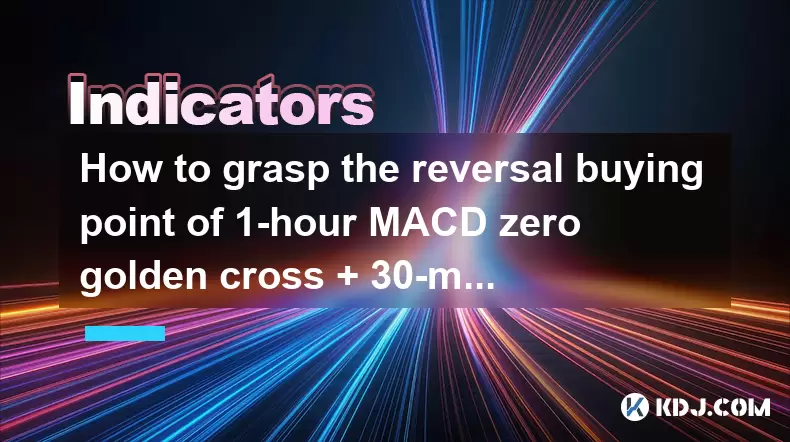
Understanding the 1-Hour MACD Zero Golden Cross
The MACD (Moving Average Convergence Divergence) is a momentum indicator widely used in cryptocurrency technical analysis. The zero golden cross on the 1-hour chart occurs when the MACD line crosses above the signal line precisely at or near the zero baseline. This event signals a potential shift from bearish to bullish momentum. Traders interpret this as a strong reversal signal, especially when it appears after a prolonged downtrend.
To identify this signal correctly, ensure the MACD settings are standard: 12-period EMA, 26-period EMA, and a 9-period signal line. Watch the MACD histogram shrink as the two lines converge near the zero line. When the MACD line (faster line) crosses above the signal line (slower line) while both are close to zero, the golden cross at zero is confirmed. This condition suggests that short-term momentum is overtaking long-term momentum in a bullish direction.
It's crucial to wait for the candle to close after the cross to avoid false signals. Real-time wicks or intrabar movements may mislead traders. Only after the 1-hour candle closes with the MACD line above the signal line near zero should the signal be considered valid. This setup is more reliable when it occurs after oversold conditions identified by other indicators like RSI or stochastic.
Interpreting the 30-Minute Yang Line Volume Pattern
The Yang line volume refers to a Japanese candlestick pattern where a green (positive) candle is accompanied by increasing volume, indicating strong buying pressure. On the 30-minute chart, this pattern becomes a confirmation signal when aligned with the 1-hour MACD zero golden cross.
To spot a valid Yang line volume signal:
- Look for a 30-minute candle that closes higher than it opened (green candle).
- Confirm that the volume bar associated with this candle is significantly higher than the average of the previous 5–10 candles.
- Ensure the candle appears after a period of consolidation or downtrend, showing renewed buyer interest.
- The high volume confirms that the price move is not speculative but backed by market participation.
This volume surge suggests that large participants are entering the market, increasing the probability of a sustainable upward move. When this occurs shortly after the 1-hour MACD zero golden cross, it acts as a confluence point, strengthening the reversal hypothesis.
Combining the Two Indicators for Entry Timing
The real power of this strategy lies in the confluence of signals across different timeframes. The 1-hour MACD zero golden cross provides the macro-level reversal context, while the 30-minute Yang line volume offers micro-level confirmation of buying momentum.
To execute this strategy:
- Monitor the 1-hour chart for the MACD zero golden cross.
- Once the cross is confirmed on a closed candle, switch to the 30-minute chart.
- Wait for a green candle with high volume that closes above its open.
- Ensure this candle appears within the same or the next two 30-minute periods after the 1-hour signal.
- Enter a long position at the close of the high-volume Yang candle.
Set a stop-loss just below the low of the Yang candle or the most recent swing low on the 30-minute chart. This protects against false breakouts. Use a risk-reward ratio of at least 1:2 by setting a take-profit level at the nearest resistance zone, such as a previous swing high or Fibonacci extension level.
Filtering False Signals with Additional Confirmation Tools
Even strong signals can fail without proper context. To reduce false entries, integrate support and resistance levels, trendlines, or moving averages as filters.
For example:
- Confirm that the 1-hour MACD zero cross occurs near a key horizontal support level.
- Check if the price is bouncing off a rising 50-period or 200-period EMA on the 1-hour chart.
- Use the RSI (Relative Strength Index) on the 1-hour chart to ensure it is rising from below 30 (oversold).
- On the 30-minute chart, verify that the high-volume Yang candle breaks above a minor resistance level.
These additional layers help confirm that the reversal is not occurring in a vacuum. A MACD cross near zero without support or volume confirmation may simply be a dead cat bounce. The presence of converging technical factors increases the probability of a successful trade.
Practical Example Using Binance BTC/USDT Pair
Suppose BTC/USDT has been in a downtrend on the 1-hour chart. The MACD lines have been below zero, with the histogram in negative territory. Over several hours, the histogram bars shrink, indicating weakening bearish momentum.
Suddenly, on the 14:00 UTC 1-hour candle, the MACD line crosses above the signal line, and both are near the zero line. The candle closes green. This is the zero golden cross signal. You now shift attention to the 30-minute chart.
At 15:30 UTC, a 30-minute candle forms: it opens at $60,200, closes at $60,800, and the volume bar is 1.8x the 10-candle average. This is a high-volume Yang candle. You enter a long position at $60,800.
Place a stop-loss at $60,000 (below the recent swing low), and set a take-profit at $62,500 (next resistance level). Over the next 6 hours, price rises to $62,300, hitting your target.
Common Pitfalls and How to Avoid Them
One major mistake is entering before confirmation. Some traders act on the MACD cross mid-candle, only to see it reverse. Always wait for the candle to close. Another error is ignoring volume. A Yang candle without volume surge may indicate weak buying interest.
Avoid trading this setup during low-liquidity periods, such as weekends or holidays, when volume is thin and whipsaws are common. Also, do not apply this strategy in strongly trending markets without pullbacks — it is designed for reversals, not continuations.
Ensure your charting platform updates in real time and that your MACD and volume indicators are correctly configured. Test the strategy on historical data using Binance or TradingView’s replay mode to gain confidence.
FAQ 1: What if the 30-minute Yang candle appears more than two periods after the 1-hour MACD cross?
If the high-volume Yang candle appears too late, the initial momentum may have faded. The signal loses relevance. Only consider Yang candles that form within 1–2 periods after the 1-hour cross. Delayed reactions often lack strength.
FAQ 2: Can this strategy be used on altcoins like ETH or SOL?
Yes, but ensure the altcoin has sufficient trading volume. Low-cap coins may exhibit erratic volume patterns, leading to false Yang signals. Stick to major pairs like ETH/USDT or BNB/USDT with consistent liquidity.
FAQ 3: Should I use leverage when trading this setup?
Leverage amplifies both gains and losses. Given the reversal nature of this strategy, avoid high leverage. Use 2x–3x at most, and always size your position so that the stop-loss represents no more than 1–2% of your capital.
FAQ 4: How do I adjust the MACD settings for different market conditions?
The standard 12, 26, 9 settings work best for most scenarios. Avoid frequent changes. If you must adjust, test any modified settings (e.g., 8, 17, 5) on historical data first. Consistency in settings ensures reliable signal comparison over time.
Disclaimer:info@kdj.com
The information provided is not trading advice. kdj.com does not assume any responsibility for any investments made based on the information provided in this article. Cryptocurrencies are highly volatile and it is highly recommended that you invest with caution after thorough research!
If you believe that the content used on this website infringes your copyright, please contact us immediately (info@kdj.com) and we will delete it promptly.
- Kiyosaki's Crypto Playbook: Ditching Paper for Real Assets Like Bitcoin
- 2025-07-25 22:30:11
- Satoshi-Era Whales Stir the Bitcoin Pot: What's the Deal?
- 2025-07-25 22:30:12
- Pi Coin Value in Indian Rupees (INR) 2024: Decoding the Hype
- 2025-07-25 21:45:50
- Crypto Investing: Top Picks and Meme Coin Mania in '25
- 2025-07-25 21:52:07
- Ark Invest's Portfolio Rebalance: Coinbase, Block, and the Crypto Shift
- 2025-07-25 21:52:07
- Bitcoin's Wild Ride: Sell-offs, Volatility, and What's Next
- 2025-07-25 21:55:18
Related knowledge

How to interpret that the KDJ D line is downward for a long time but the price is sideways?
Jul 25,2025 at 07:00pm
Understanding the KDJ Indicator and Its ComponentsThe KDJ indicator is a momentum oscillator widely used in cryptocurrency trading to assess overbough...

What does it mean that the KDJ indicator forms a double bottom at a low level?
Jul 25,2025 at 05:08pm
Understanding the KDJ Indicator in Cryptocurrency TradingThe KDJ indicator is a momentum oscillator widely used in cryptocurrency trading to identify ...
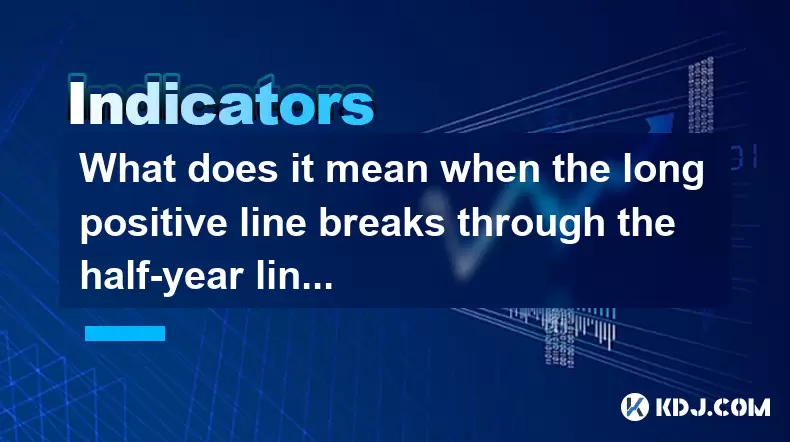
What does it mean when the long positive line breaks through the half-year line and then steps back?
Jul 25,2025 at 06:49pm
Understanding the Long Positive Line in Candlestick ChartsIn the world of cryptocurrency trading, candlestick patterns play a vital role in technical ...
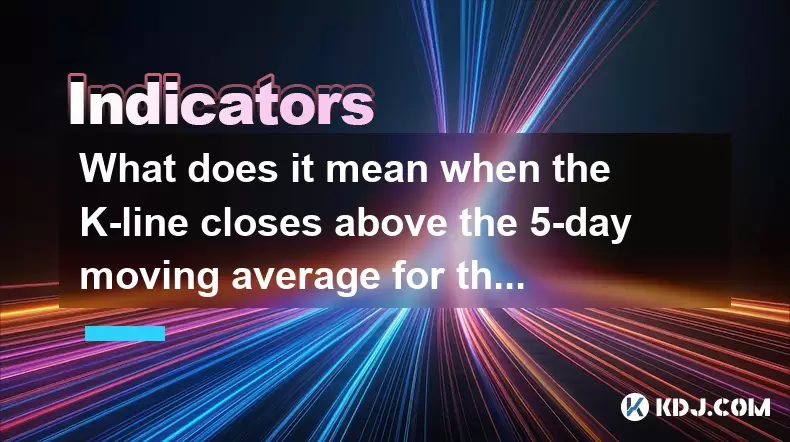
What does it mean when the K-line closes above the 5-day moving average for three consecutive days?
Jul 25,2025 at 10:07pm
Understanding the K-line and 5-day Moving AverageThe K-line, also known as a candlestick, is a critical charting tool used in technical analysis to re...
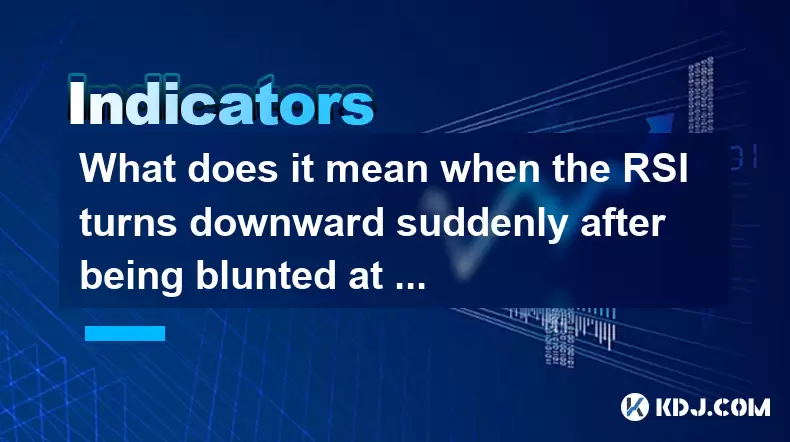
What does it mean when the RSI turns downward suddenly after being blunted at a high level?
Jul 25,2025 at 04:00pm
Understanding the RSI and Its Role in Technical AnalysisThe Relative Strength Index (RSI) is a momentum oscillator that measures the speed and change ...
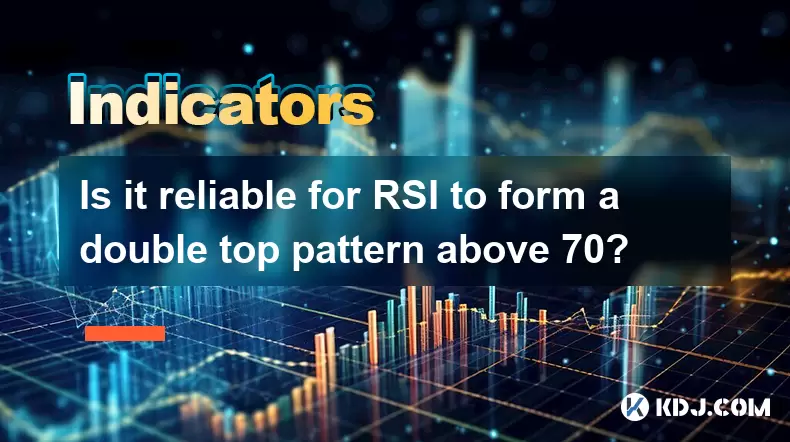
Is it reliable for RSI to form a double top pattern above 70?
Jul 25,2025 at 04:49pm
Understanding the RSI Indicator and Its Role in Technical AnalysisThe Relative Strength Index (RSI) is a momentum oscillator that measures the speed a...

How to interpret that the KDJ D line is downward for a long time but the price is sideways?
Jul 25,2025 at 07:00pm
Understanding the KDJ Indicator and Its ComponentsThe KDJ indicator is a momentum oscillator widely used in cryptocurrency trading to assess overbough...

What does it mean that the KDJ indicator forms a double bottom at a low level?
Jul 25,2025 at 05:08pm
Understanding the KDJ Indicator in Cryptocurrency TradingThe KDJ indicator is a momentum oscillator widely used in cryptocurrency trading to identify ...

What does it mean when the long positive line breaks through the half-year line and then steps back?
Jul 25,2025 at 06:49pm
Understanding the Long Positive Line in Candlestick ChartsIn the world of cryptocurrency trading, candlestick patterns play a vital role in technical ...

What does it mean when the K-line closes above the 5-day moving average for three consecutive days?
Jul 25,2025 at 10:07pm
Understanding the K-line and 5-day Moving AverageThe K-line, also known as a candlestick, is a critical charting tool used in technical analysis to re...

What does it mean when the RSI turns downward suddenly after being blunted at a high level?
Jul 25,2025 at 04:00pm
Understanding the RSI and Its Role in Technical AnalysisThe Relative Strength Index (RSI) is a momentum oscillator that measures the speed and change ...

Is it reliable for RSI to form a double top pattern above 70?
Jul 25,2025 at 04:49pm
Understanding the RSI Indicator and Its Role in Technical AnalysisThe Relative Strength Index (RSI) is a momentum oscillator that measures the speed a...
See all articles

























































































